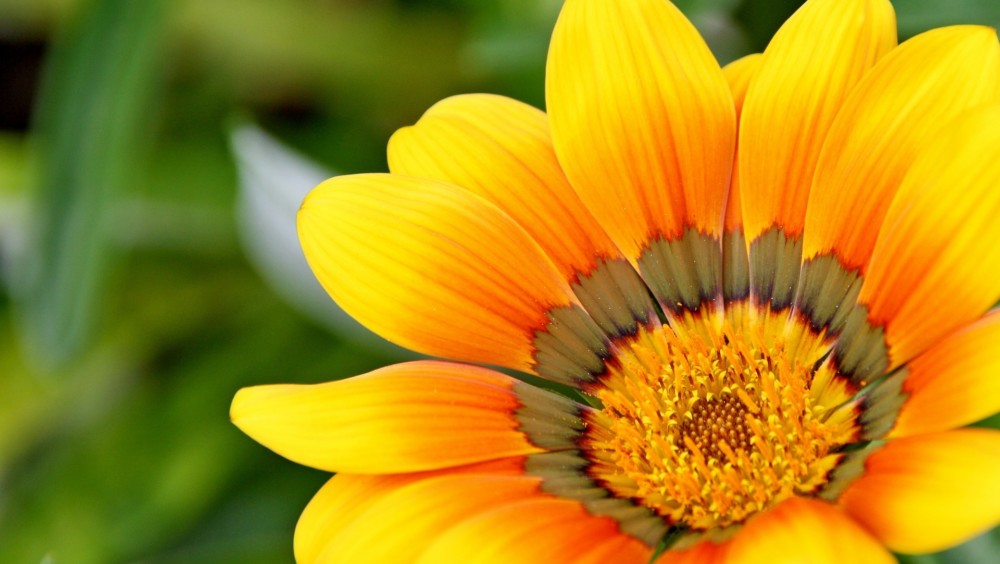Small Gardens, Big Personality
Sidewalk gardens give front yards a unique look
They’re known as sidewalk gardens, hell strip gardens and even terrace gardens – but much like a rose, a garden by any name is just as sweet. Located on the lawn between the sidewalk and street, these miniature gardens can add curb appeal and big personality to front yards.
And it’s not just the sidewalk space that residents are using, as master gardener Steve Schultz explains. Sidewalk gardens, popular on the East and West Coast and in cities like Madison, have given birth to creativity in many cityscapes.
“People are starting to take over the center medians in culs-de-sac and other creative places to start gardening,” explains Schultz, an Appleton resident. “They want to bring more beauty into our lives, and we can certainly use it.”
If bringing more beauty into your life is a priority this spring, the following tips from local experts can help guide you through the process.
Permission to plant & other considerations
Before getting out the seed catalogues and putting pen to paper to design your sidewalk garden, be sure planting one is even an option, recommends Schultz. City or village ordinances may not allow them, or they may be allowed with restrictions on height and the type of plantings you can place there. You should also speak with neighbors about your plans, says Schultz. Once the green light is given from all concerned parties, you can begin thinking about the purpose for your garden.
“Is it just something pretty?” Schultz asks. “Is it meant to produce food? Is it meant to be a pollinator garden? How much time do you want to devote to keeping it up? You can control that to some extent by the choices you make.”
Another large consideration, which will also be affected by what you choose to plant, is the availability of water.
“It’s called ‘hell strip’ gardening for a reason: it’s hot,” Schultz says. “It’s surrounded on both sides by cement – something that holds heat – and if it’s blacktop, it’s going to be even hotter. So, you have to have a ready access to water. Then, there will be general maintenance of pruning, planting and here in Wisconsin we have the winter-fall cleanup.”
Choose plants and flowers that will thrive
If you want to plant edibles in the space, you need to ensure the soil isn’t contaminated with fuel, lead and other chemicals. To do this, you need to have it tested.
“I would never grow table food in a strip where I didn’t know what had been there over time,” Schultz says. “The simplest solution for that, because testing for soil can be costly, is to dig it out. You dig it out, say a foot down, and replant it with new soil. That way you control a couple of problems, including any pesticides or lead or anything else in the soil that could get in the food.”
If the homeowner wishes to go with a more landscaped look for their sidewalk garden, Steve Tuma, landscape designer at Lowney’s Landscaping Center in Appleton, recommends hardy, low-growing perennials like daylilies, black-eyed Susans, salvia, sedum and sweet woodruff. If there is shade, Tuma says hostas could also do well.
“I think shorter grasses would be another really nice option that could tolerate that area as well, and its conditions,” adds Tuma. “You need something extremely hardy because that space will get a little more effect from salt, piling of snow, traffic from people walking dogs, things like that.”
Appleton’s take on the sidewalk garden: The Marigold Mile
It’s not just private citizens who have embraced the trend. Cities are now seeing it as a great way to make their outdoor spaces more inviting and aesthetically pleasing. Appleton was ahead of the game with its famous Marigold Mile, started on a smaller level in 1988 by Pam Sturm. In 2007, the project was converted to a nonprofit organization called The Marigold Mile, Inc., and in 2008 more than 8,000 marigolds were planted on South Oneida Street from Calumet Street to the Skyline Bridge.
As longtime volunteer and master gardener “Marigold” Mike Turner explains, the marigolds they use for the project are easily seen from the road when driving past and take the heat very well. Planting and watering are done by volunteers, and Turner says his volunteers have a real sense of buy-in with the Marigold Mile.
“They take possession of what they’ve done, and that just makes everyone feel so good,” he states.
The feedback from the public as they pass by the marigolds is also appreciated. Turner says, “It’s really a feel-good thing when you see people coming down the street as we’re out there planting and watering, and they say how much they enjoy what we’re doing.”
Increase your curb appeal
In addition to creating a pleasing aesthetic, another benefit to this style of garden is the extra gardening space it gives those homeowners who have a limited yard area.
“It also increases your home’s curb appeal,” Schultz says. “It shows people care and have taken care of the lot.”
Before you begin, be sure you have the support of your neighbors, reiterates Tuma. You want to be cognizant of who else is going to be affected by what is planted in the area, whether they’re viewing it or walking alongside it. When done correctly, it can really give the whole neighborhood a unique feel.
“It’s more of a neighborhood feel, versus the cookie-cutter lawn and staple trees in that space,” Tuma adds.











Leave a Comment